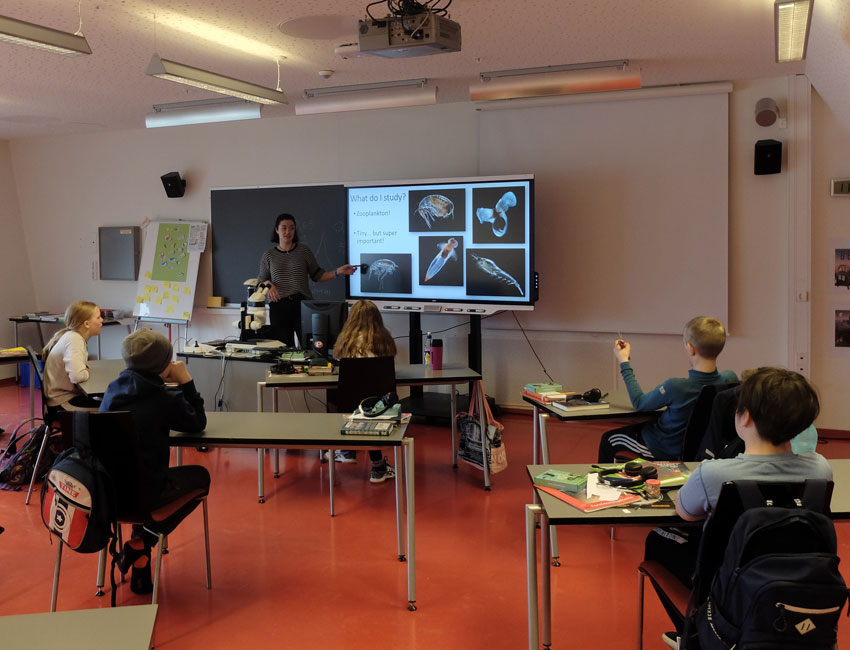Fieldwork in the time of corona
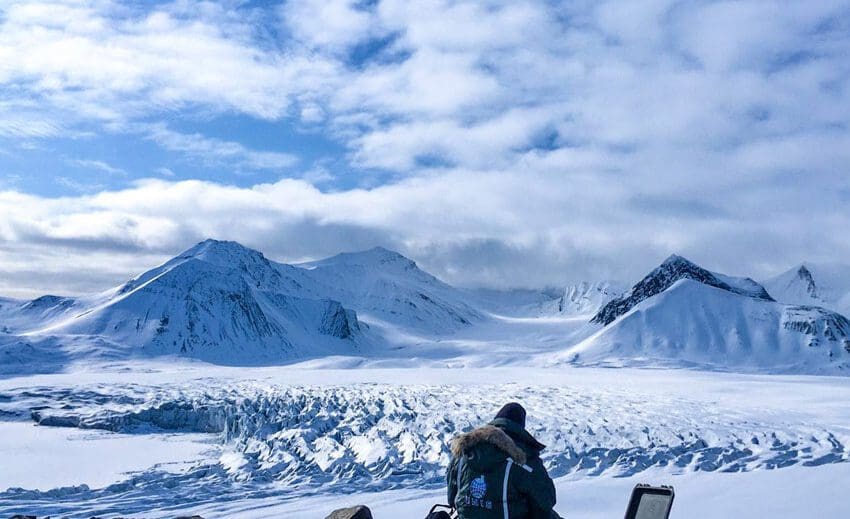
UNIS is studying glacier crevasses in spring 2020. Photo: Christina Hess.
Top image: UNIS is studying glacier crevasses in spring 2020. Photo: Christina Hess.
Since the gradual reopening of UNIS, we have managed to carry out fieldwork for important research projects and projects that have time series measurements that are essential to maintain.
16 June 2020
Text: UNIS
The selected fieldwork operations have been done after thorough review by our healthcare adviser, who has enabled UNIS to carry out fieldwork in an infection prevention satisfactory manner. Here are some of the fieldwork projects that have been undertaken over the last months:
Looking at glacier crevasses
Armin Dachauer and UNIS and NTNU PhD candidate Richard Hann are working on a project at UNIS which uses drones to study glacier crevasses. The goal is to understand the role of crevasses on how glaciers exchange heat with the atmosphere – a topic that is very relevant in the context of global climate change.
– Our main fieldwork was planned during the period of the COVID-19 shutdown, but we were lucky enough to conduct most of it when UNIS opened for fieldwork again, Richard Hann says. – We had strict requirements on how the fieldwork was to be conducted, ensuring social distancing at all times. In practice this was not too difficult for us but still required mindfulness. Most of the field time we spent on driving on snowmobiles – everybody on their own. Once at our destinations, we flew a drone above the glacier to take pictures of the crevasses – again this was easily possible with minimal interaction between the fieldwork participants. We will use these pictures to build 3D models of the glaciers which we can then process further to determine how the crevasses affect the heat exchange with the atmosphere. We are currently planning for more fieldwork in the summer as well, where we want to access some of the glaciers by boat, Hann concludes.
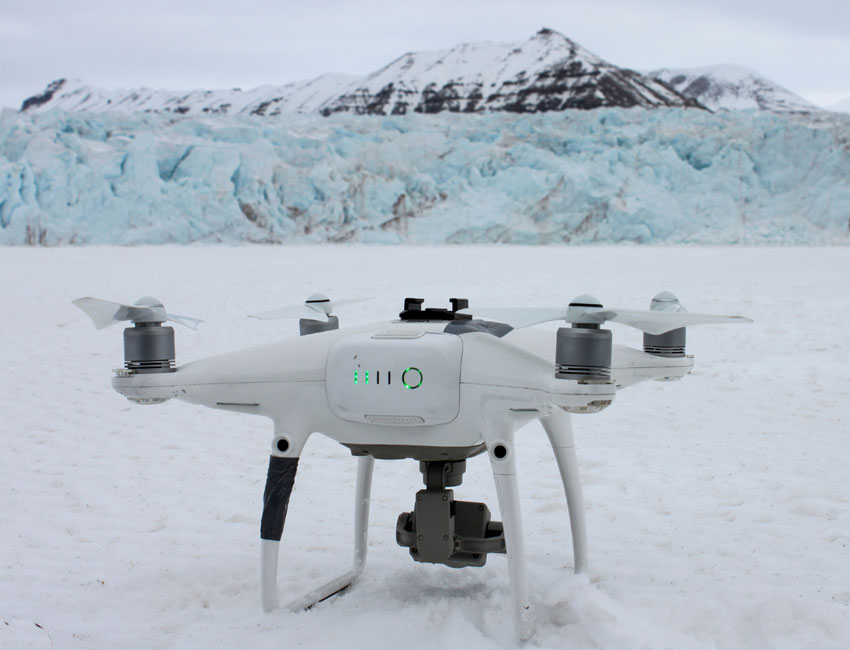
Maintaining marine time series station
The Isfjorden-Adventfjorden (IsA) time series station has been sampled weekly to monthly since 2011. The station is periodically influenced by Atlantic Water inflow, thus making it an excellent model site for studying the ecosystem effects of Atlantification. UNIS PhD candidate in marine biology, Cheshtaa Chitkara, has been out to the station to do sampling.
– In this project 18S rDNA metabarcoding data is obtained from DNA and RNA extracted from samples collected from 2011 to 2019, from 15m and 75m depth. The data collected is used to study temporal and inter-annual patterns in the diversity and community composition of microbial eukaryotes, she says. – This data is also analysed in relation to collected environmental data (CTD), photosynthetically active radiation, nutrients, size-fractionated chlorophyll and particulate organic carbon and nitrogen using multivariate statistics. Our analysis will relate community composition to several environmental factors e.g. water masses and seasons (light regime). We will also attempt to create models that describe the variability in our data and that can be used to predict the fate of the microbial communities given various predicted climate scenarios, Chitkara explains.
Counting reindeers
The seasonal reindeer count in Bjørndalen (part of the BIG project) was one of the first allowed fieldwork projects at UNIS. It is simple and there are only two project “counters” which managed to keep at the allowed social distance. In early April they counted 31 reindeer in Bjørndalen, most of which were adult females and calves. In early May, this year’s calves were observed in Bjørndalen.
– This is really early, but the reason is that we have had no stress of Rain-On-Snow (ROS) this winter, which means it’s been a very good year for reindeers in Svalbard, says professor Mads Forchhammer. More reindeer males are coming in Bjørndalen in May and this year’s first calves were observed as early as in the beginning of May following a winter with no recorded ROS.
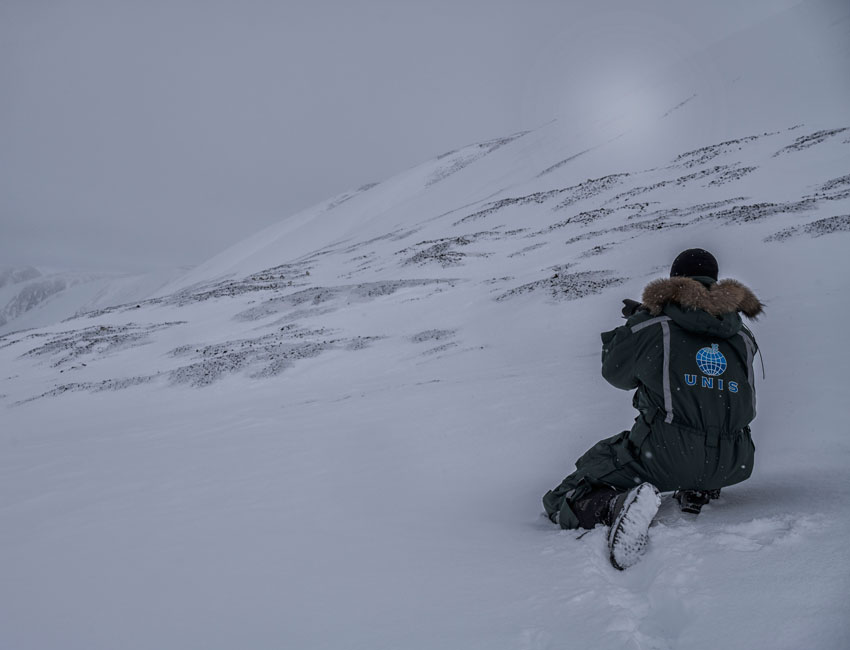
Pile testing outside UNIS
The pile test campaign at the UNIS east test-site is a part of the Nunataryuk project, funded by the European Union’s Horizon 2020 Research and Innovation Program. The main goal of Nunataryuk is to determine the impacts of thawing land, coast and subsea permafrost on the global climate and on humans in the Arctic and to develop targeted and co-designed adaptation and mitigation strategies.
UNIS and NTNU PhD candidate Chuangxin Lyu works on the project, which was started in March this year.
– Svalbard has experienced an increase in temperature over the past 40 years, causing the permafrost to thaw. Thawing of frozen soil weakens the soil’s mechanical strength and leads to larger time-dependent deformations, he explains. – To investigate this and to provide accurate soil test data, test piles are inserted in the ground and loaded with large weights, and carefully monitored, Lyu says.
The project will be concluded in late 2022.
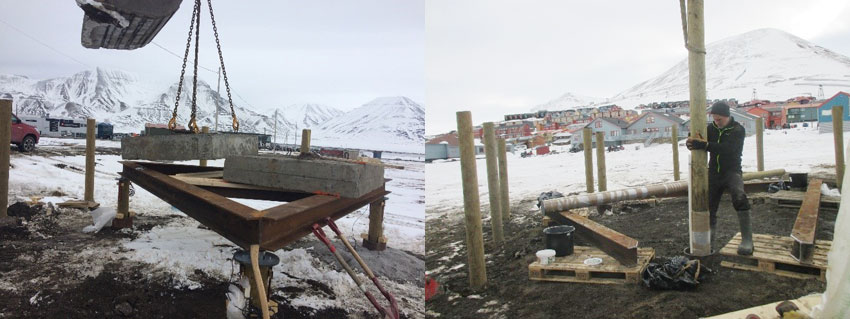
Teaching school kids
Some of our PhD candidates also worked with the pupils at Longyearbyen School. The 6th graders have been having their teaching done at UNIS and have been introduced to the fascinating biological life in Adventfjorden. PhD candidate Robynne Nowicki has showed the students all the tine creatures found in the water masses and accompanied them to the fjord to look at the biological life on the shore.
These are some of the projects that have been possible to do during the Covid-19 pandemic. Throughout the summer and autumn several other projects will be carried out, according to the at all times current infection prevention measures in place.
